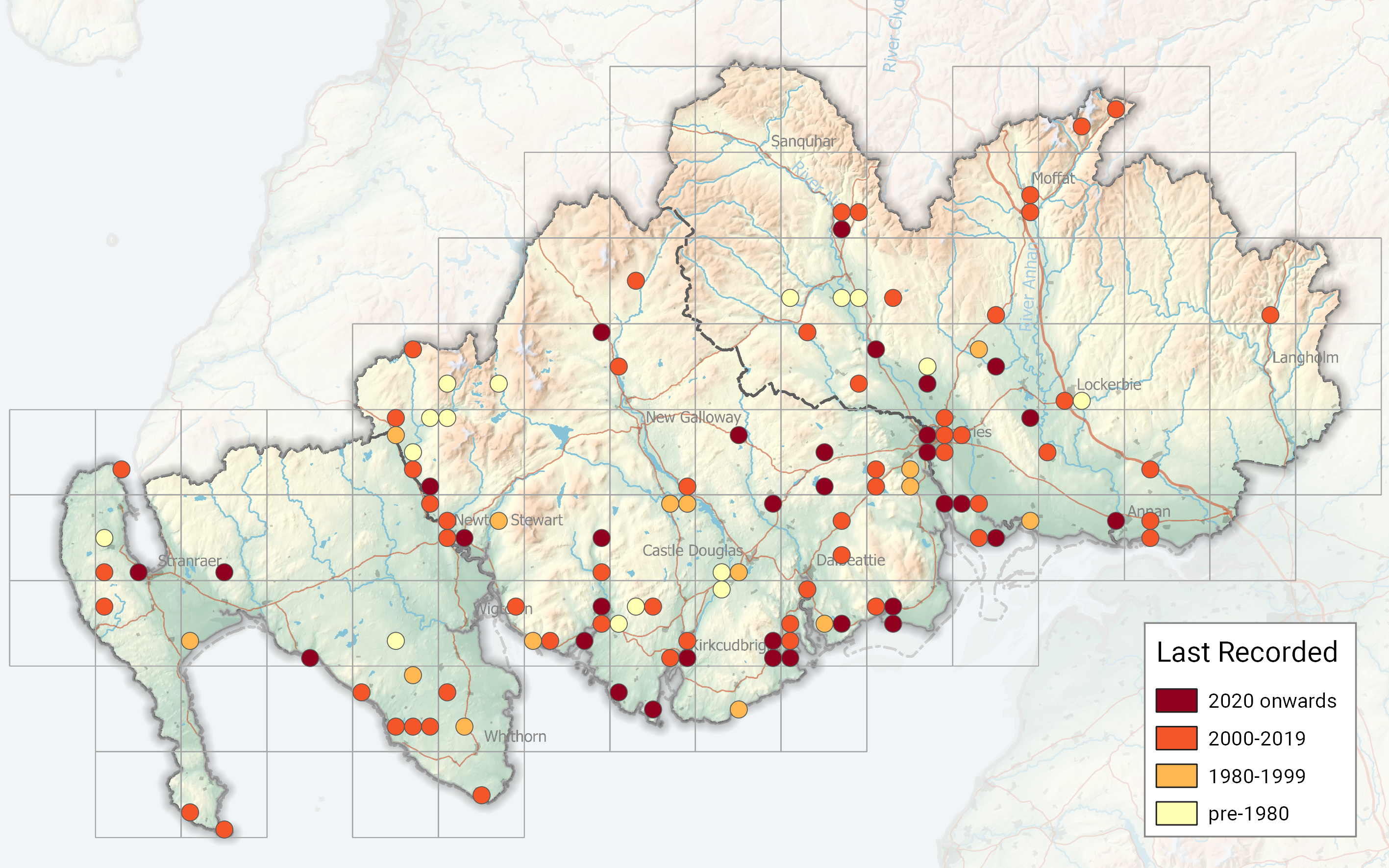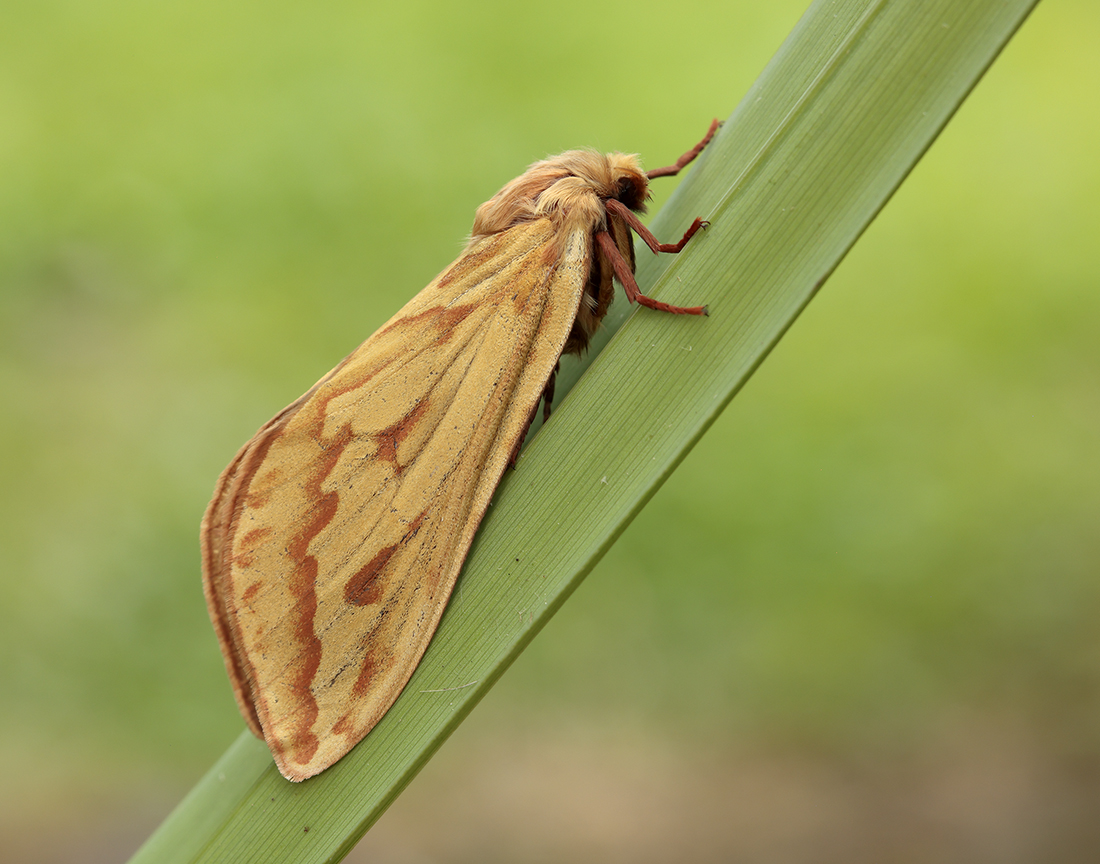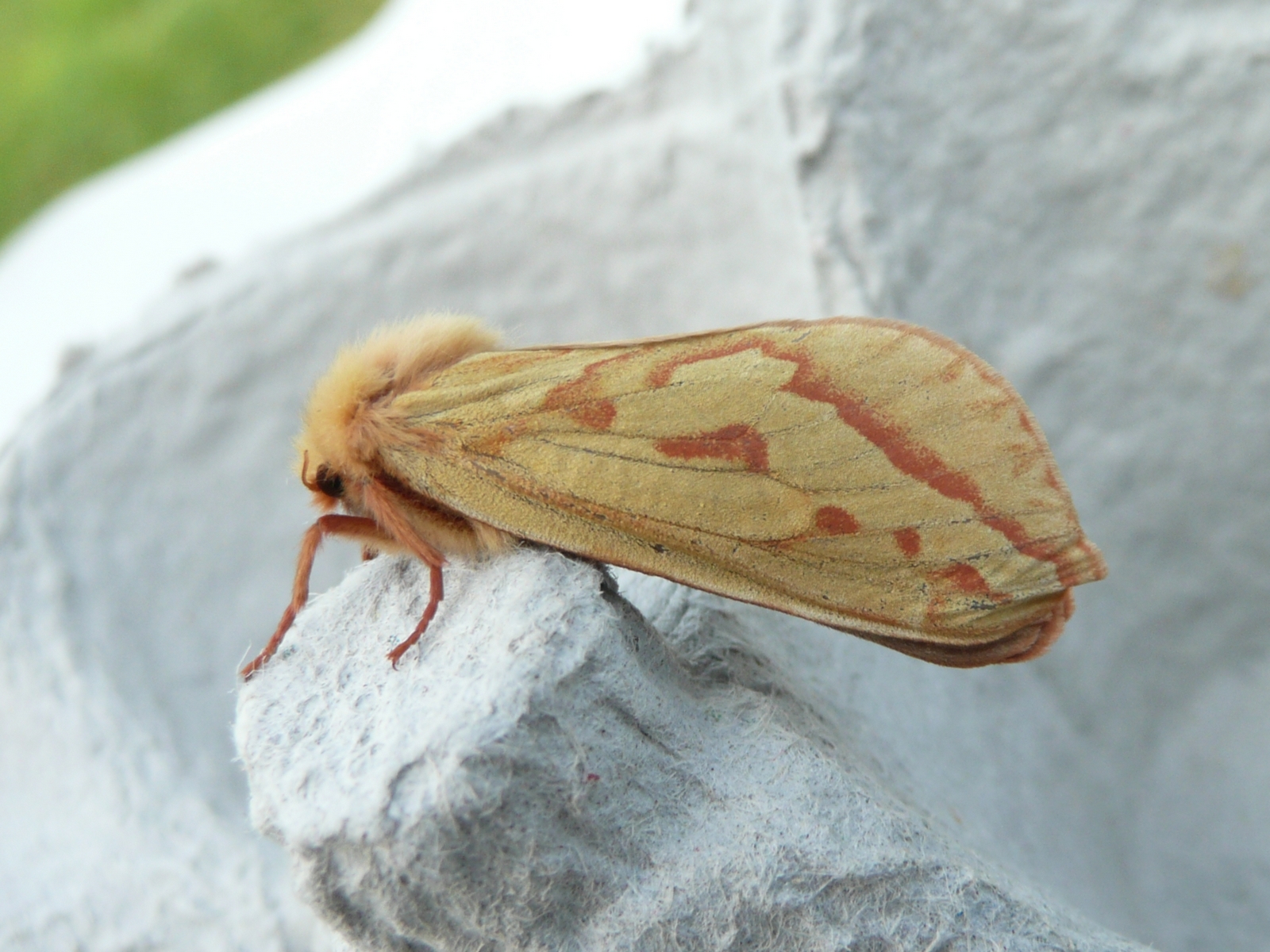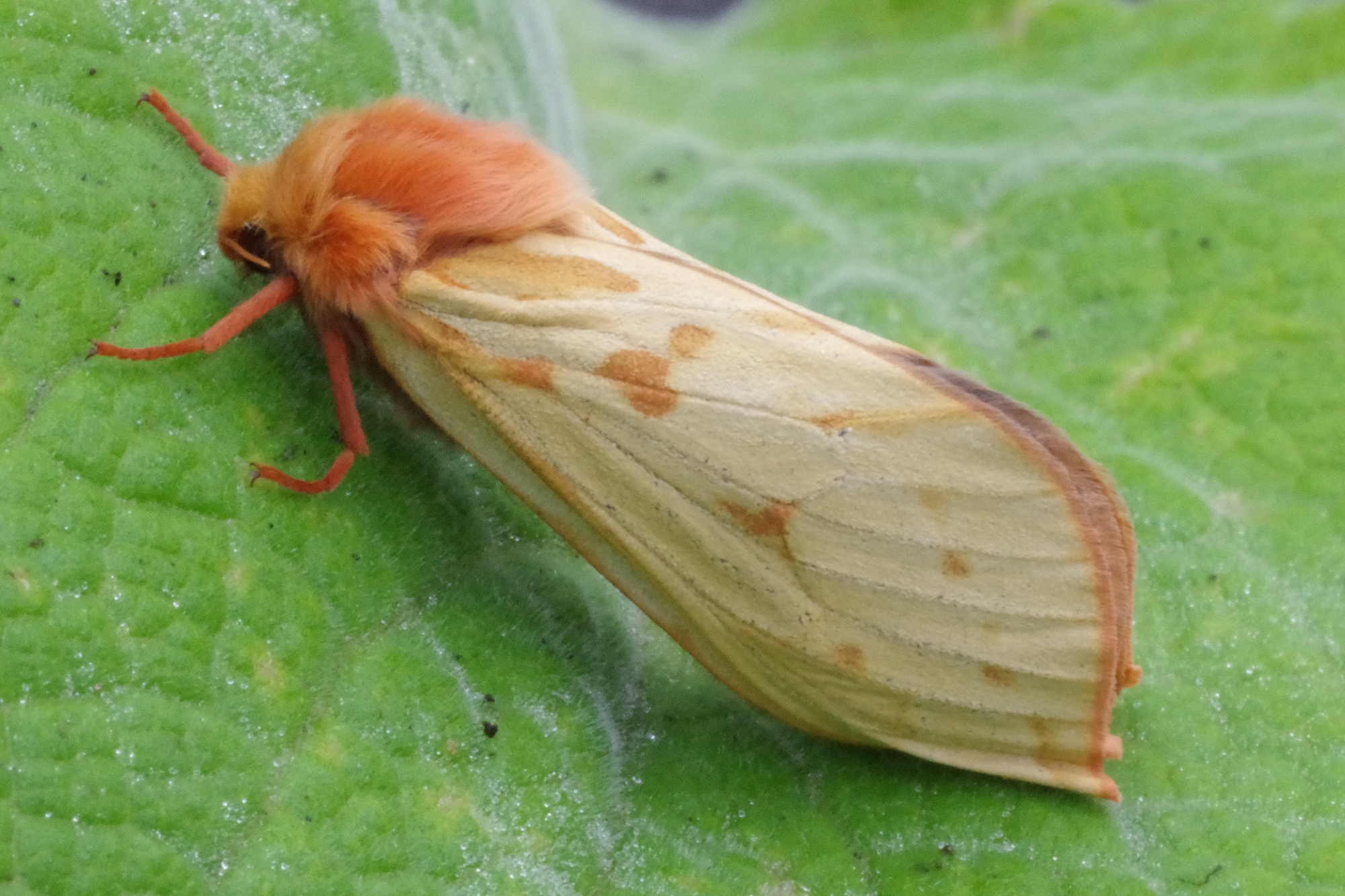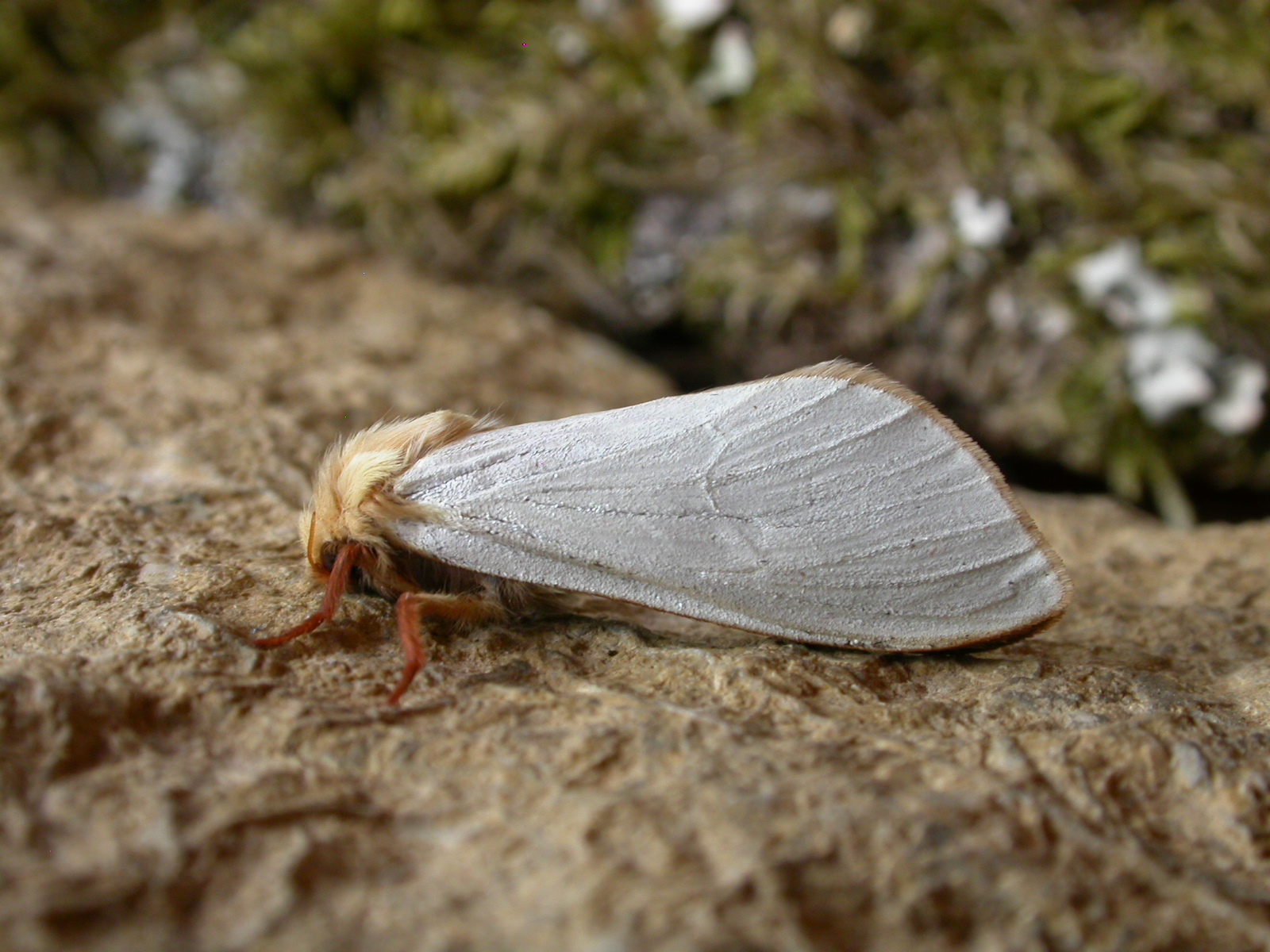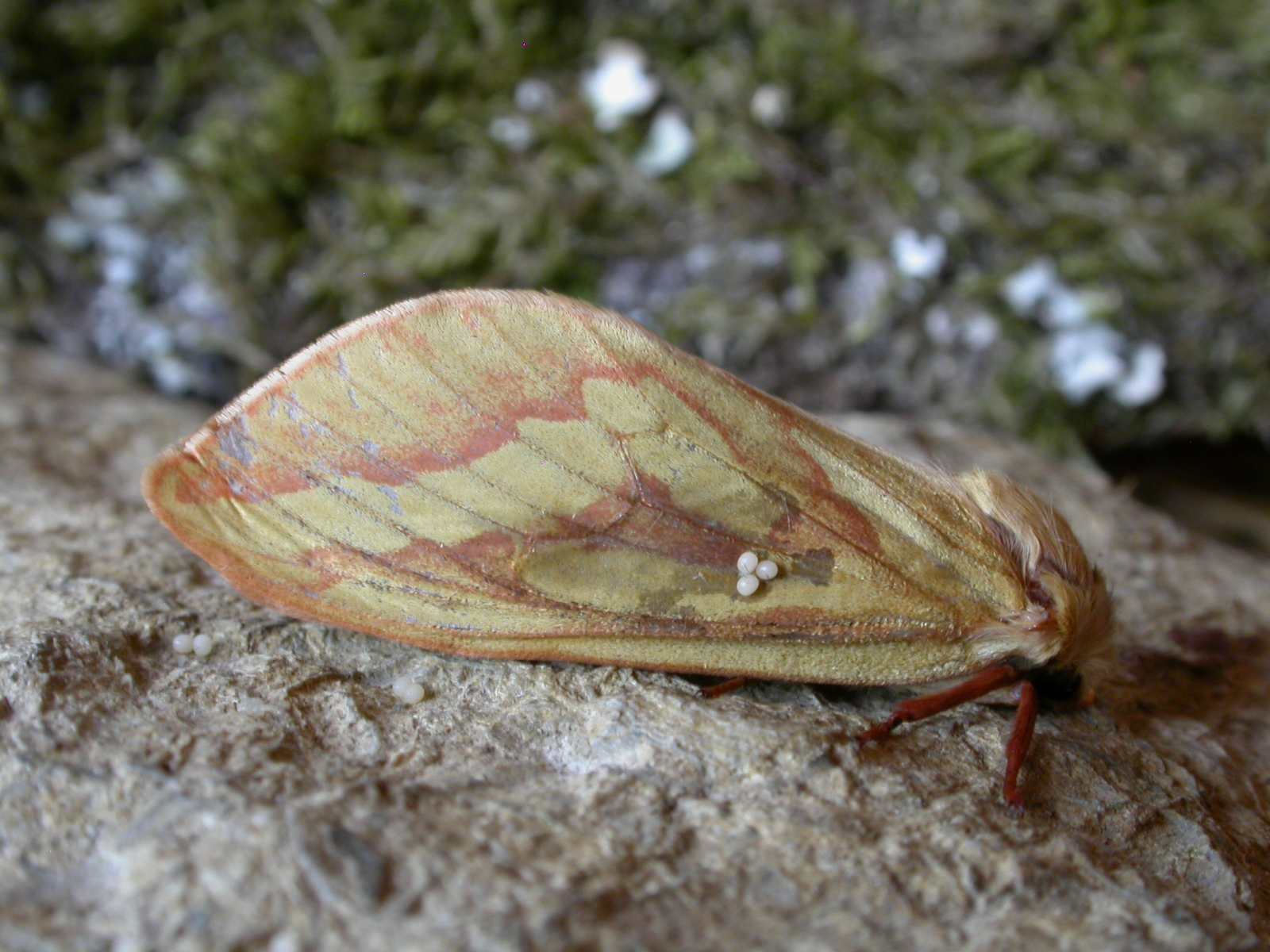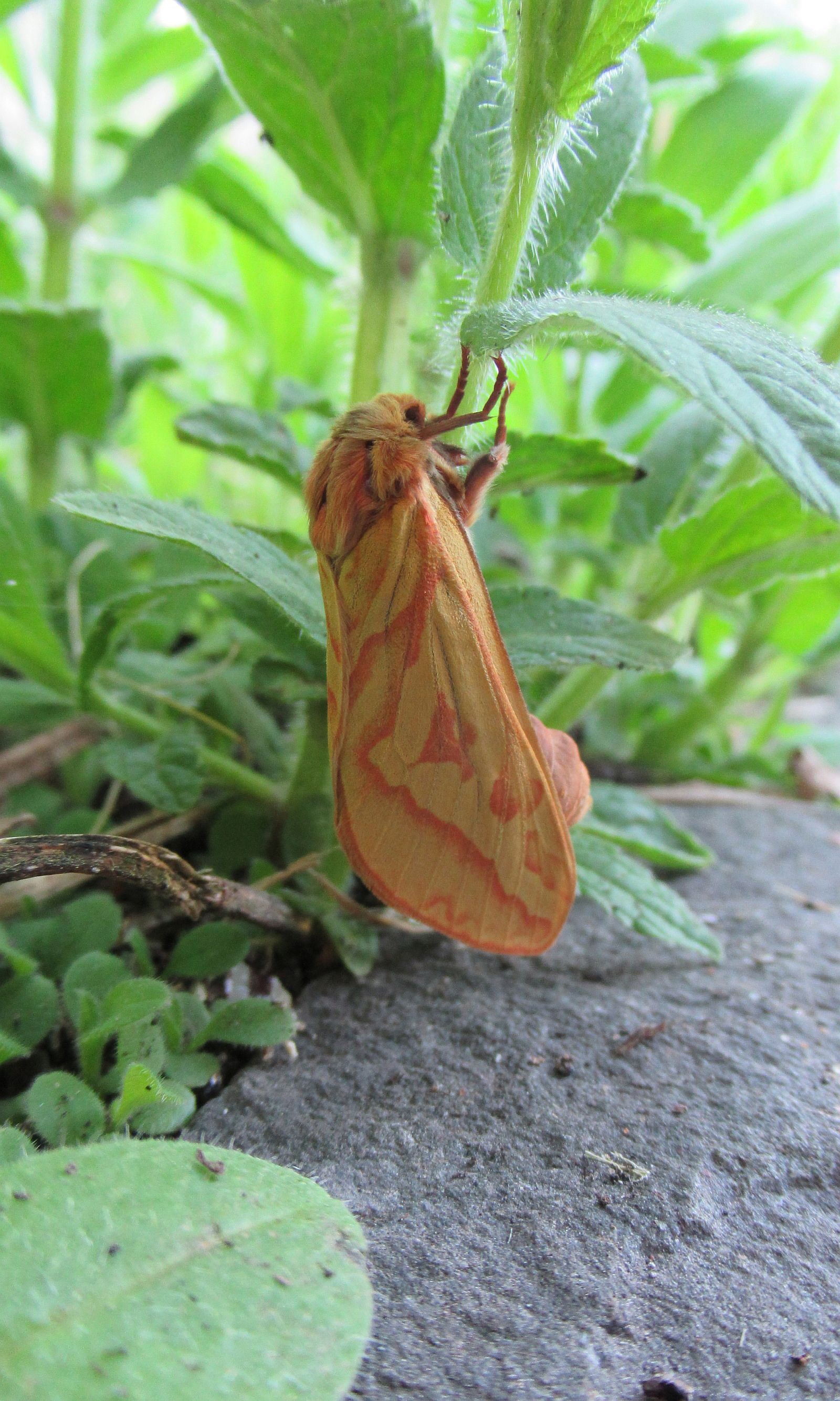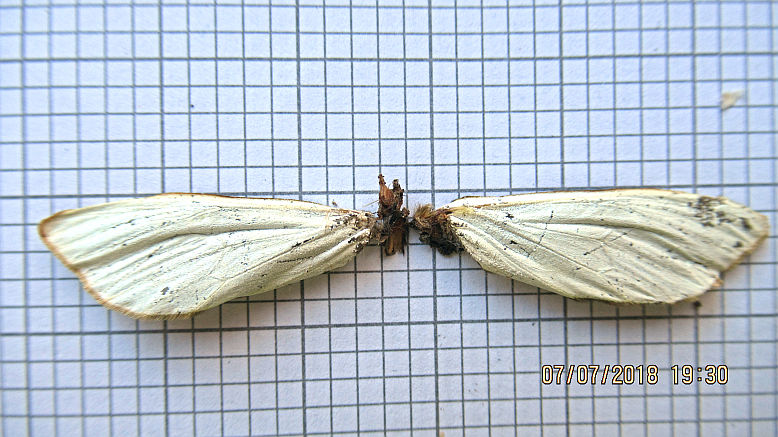Identification
Unmistakable. Sexually dimorphic, the male with plain white wings, the female yellow with variable orange markings. The sex is worth recording.
Life cycle
One generation. Overwinters as a larvae during July to May, with pupation underground, but this probably occurs over two seasons.
The adult Ghost Moth has no proboscis, so it is never found at sugar or flowers.
Larval foodplants
Grasses, Common Nettle, docks, burdocks, to name a few.
Habitat
Grassy and weedy places.
History 1860-2010
The first known mention of the Ghost Moth was when William Lennon (1863) in his ‘List of Lepidoptera taken near Dumfries’ said it was “common everywhere.” The next mention was when R. S. Gordon (1913) of Corsemalzie, Wigtownshire, stated it to be common and generally distributed in gardens, fields and roadsides; also, that in June 1897 it was particular numerous in a grassy field nearby that Black-headed Gulls came to feast on them.
In 1944 Archibald Russell recorded it for Kirkcudbrightshire near Gatehouse-of-Fleet.
About thirty records were recorded at the Rothamsted stations during 1974-89. From 1990 to 2010 there were only four records from Wigtownshire with the rest of the 140 records coming from widespread scattered sites in Dumfriesshire and Kirkcudbrightshire, proving it to be common.
The subspecies H. h. thulensis Newman, 1865 although a resident of Shetland, has surprisingly been recorded twice in our Region. The first was caught on the banks of the Nith (VC72) on 3rd July 1946, with the second, also caught on the same day in 1975 at Newlands (VC72) in Kirkmahoe parish; it now resides at the National Museums Scotland.

